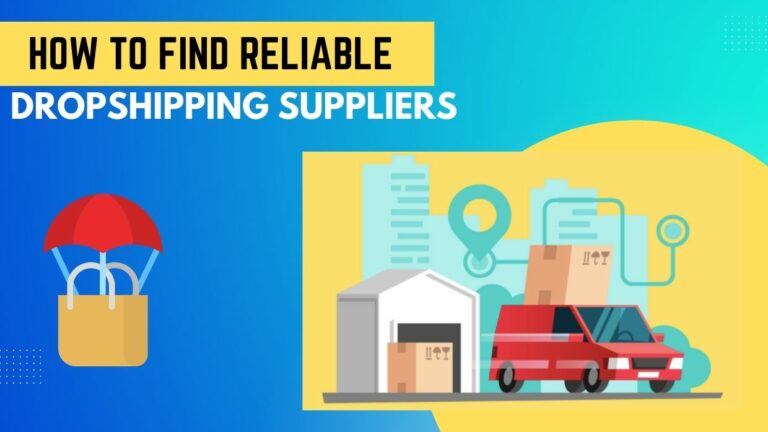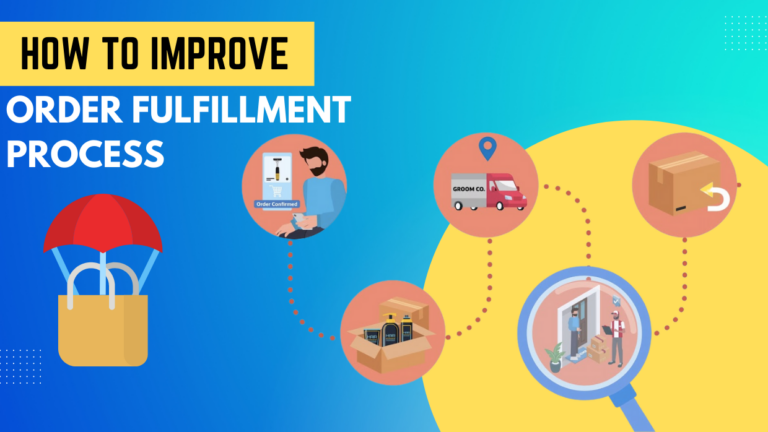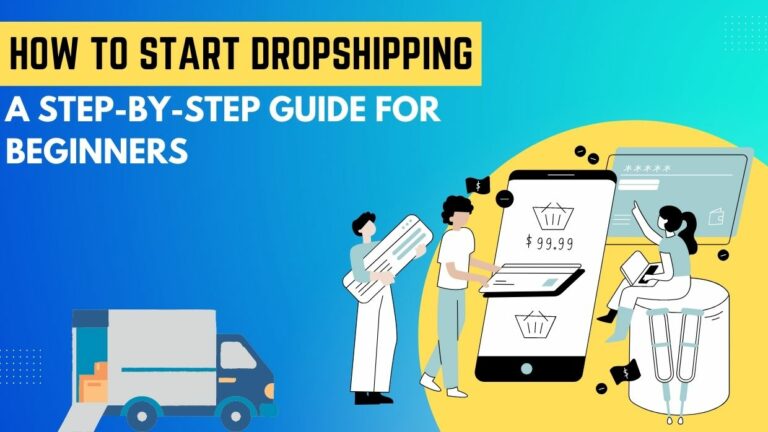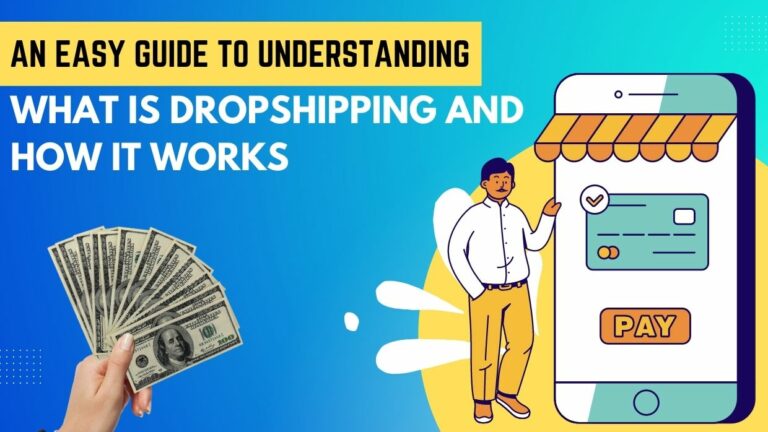How To Minimize The Risk Factor In Dropshipping
In this blog post, we’ll share some expert tips on “How To Minimize The Risk Factor In Dropshipping” and maximizing profits in your dropshipping venture. Are you thinking of starting a dropshipping business but worried about the potential risks involved? Perhaps you’ve heard horror stories of lost packages, unreliable suppliers, or unhappy customers. But fear not! With a few key strategies in place, it’s possible to minimize the risk factor in dropshipping and build a successful and sustainable business. So grab your pen and paper – it’s time to take notes!
What is Dropshipping?
Dropshipping is a business model in which e-commerce entrepreneurs sell products without having to carry any inventory. When a store owner receives an order from a customer, they simply contact the supplier, who will then ship the products directly to the customer’s doorstep. Dropshipping apps like Oberlo let you add products from various suppliers into your shop to fuel your product offering.
The biggest advantage of dropshipping is that it’s possible to start an online store without any up-front investment. You don’t have to worry about carrying inventory or managing logistics. Plus, there are several dropshipping tips you can apply to drive traffic to your store.
Read more… An Easy Guide To Understanding What Is Dropshipping And How It Works
Common Risks Associated With Dropshipping

There are a few common risks associated with dropshipping that you should be aware of before getting started.
Learn more… What are the risk factors of dropshipping?
These include:
- Supplier issues – This is by far the most common issue faced by drop shippers. It can be very difficult to find reliable suppliers who can consistently provide quality products at a good price. This can lead to frustration and even losses if products are delayed or do not meet quality expectations.
- Chargebacks – Since you will be dealing with customers directly, there is always the potential for chargebacks. This can happen if a customer is not happy with their purchase or if there are any problems with the product itself. Chargebacks can be costly and time-consuming to deal with, so it’s important to have a plan in place to minimize them.
- Shipping problems – Another common issue faced by drop shippers is problems with shipping. This can include delays, lost orders, damaged products, and more. Shipping problems can lead to customer dissatisfaction and even loss of sales, so it’s important to choose a shipping partner that is reliable and has a good reputation.
- Competition – The dropshipping industry is becoming increasingly competitive as more people learn about it and get involved. This means that you need to work hard to stand out from the crowd and make sure your customers are happy with your service.
- Returns – Since you will be selling products that you don’t have in stock, customers may want to return them. This can be difficult to manage if you don’t have a good returns policy in place. It’s important to make sure your customers know what they are getting into before they place an order.
Tips for Minimizing Risk in Dropshipping
- Find a reputable drop shipper. There are many drop shippers out there, but not all of them are created equal. Do your research to find a drop shipper that is reputable and has a good track record.
- Know your products well. Before you start selling a product, make sure you know everything there is to know about it. The more you know about a product, the better equipped you will be to answer any questions a customer may have about it.
- Don’t put all your eggs in one basket. Diversify your product offerings so that you are not relying on one or two products for all of your sales. This will help to mitigate the risk if something happens to one of your products.
- Keep good records. Keeping accurate and up-to-date records is important for any business, but it is especially important in dropshipping where things can change quickly. Make sure you keep track of your inventory, orders, and customers so that you can always be on top of things.
- Plan for the worst. No business is immune from risk, but you can minimize the impact of risks by planning for them ahead of time. Have contingency plans in place so that if something does go wrong, you know how to handle it.
By following these tips, you can minimize the risk involved in dropshipping and give yourself the best chance for success.
Researching Suppliers
When it comes to dropshipping, one of the most important things you can do is research your suppliers. This will help you minimize the risk factor involved in dropshipping and ensure that you are working with a reputable company.
There are a few things you should keep in mind when researching suppliers:
- Make sure the supplier is located in a country with good manufacturing standards. This will help ensure that the products you receive are of good quality.
- Check out the supplier’s website and see if they have a professional look and feel. This can be an indicator of how well they do business.
- Read online reviews of the supplier. See what others have said about their experience with the company.
- Contact the supplier directly and ask any questions you may have. This will give you a good idea of their customer service levels.
By taking the time to research your suppliers, you can minimize the risk factor involved in dropshipping and be confident that you are working with a reputable company.
Setting Up Shipping and Logistics
There are a few things to consider when setting up shipping and logistics for your dropshipping business.
Here are some tips to minimize the risk factor:
- Choose a reliable shipping company: This is one of the most important factors in dropshipping. Make sure to research different shipping companies and compare prices, services, and reviews before choosing one.
- Set realistic shipping expectations: Don’t overpromise and underdeliver when it comes to shipping times. Be honest with your customers about how long it will take for their order to arrive.
- Stay organized: Have a system in place for tracking orders, managing inventory, and communicating with your suppliers. This will help you stay on top of everything and avoid mistakes.
- Communicate with your customers: Keep your customers updated on the status of their orders. Let them know if there are any delays or issues so they can be understood.
- Be prepared for returns: It’s inevitable that you will have to deal with returns at some point. Have a return policy in place and make sure you can handle returns quickly and efficiently.
Testing Products Before Selling to Customers
When you’re dropshipping, there’s always a risk involved. You never know if the product you’re selling is going to be a hit or a miss with customers. That’s why it’s important to test products before selling them to customers.
There are a few different ways that you can test products before selling them to customers. One way is to create a fake customer account and order the product yourself. This will give you a chance to see what the customer experience is like and if there are any issues with the product.
Another way to test products is to create a small test batch of the product and sell it to friends or family members. This will give you an idea of how well the product sells and if there are any issues with it.
If you want to be extra sure that a product is going to be successful, you can always run a crowdfunding campaign for it. This will give you an opportunity to raise money for the product and get feedback from potential customers at the same time.
Whatever method you choose, testing products before selling them to customers is essential for minimizing risk in your dropshipping business!
Utilizing Automation
Dropshipping is a business model in which e-commerce entrepreneurs sell products without having to carry any inventory. When a store owner receives an order from a customer, they simply contact the supplier, who will then ship the products directly to the customer’s door. Dropshipping apps like Oberlo let you add products from various suppliers into your shop to fuel your product offering.
While dropshipping is a great way to start an online business with little risk, there are still some risks involved. The biggest risk is that of working with unreliable suppliers. If a supplier doesn’t ship products on time or ships defective products, it can reflect badly on your brand and ruin your reputation. This is why it’s important to carefully vet any suppliers before you start working with them.
Another risk factor is of competition. Because dropshipping is such a popular business model, there are many people doing it. This means that you need to differentiate yourself from the competition in order to succeed. One way to do this is by utilizing automation.
There are many ways that you can automate your dropshipping business in order to save time and money. For example, you can use an app like Oberlo to automate your product sourcing and inventory management. You can also use automation tools like Zapier to automate tasks like email marketing and social media postings. By utilizing automation, you can free up your time so that you can focus on other aspects of your business.
Learn more… 6 Common Mistakes To Avoid When Starting A Dropshipping Business
Conclusion
Dropshipping is a great way to get started in e-commerce without investing too much money. However, there are risks involved and the key to mitigating them is research and preparation. By understanding your market, selecting reliable suppliers, creating a robust returns policy, using payment protection services like PayPal or Stripe, and staying on top of customer service issues you can minimize the risk factor associated with drop shipping. With this knowledge in hand, you’re well-equipped to reap the rewards that dropshipping has to offer.







